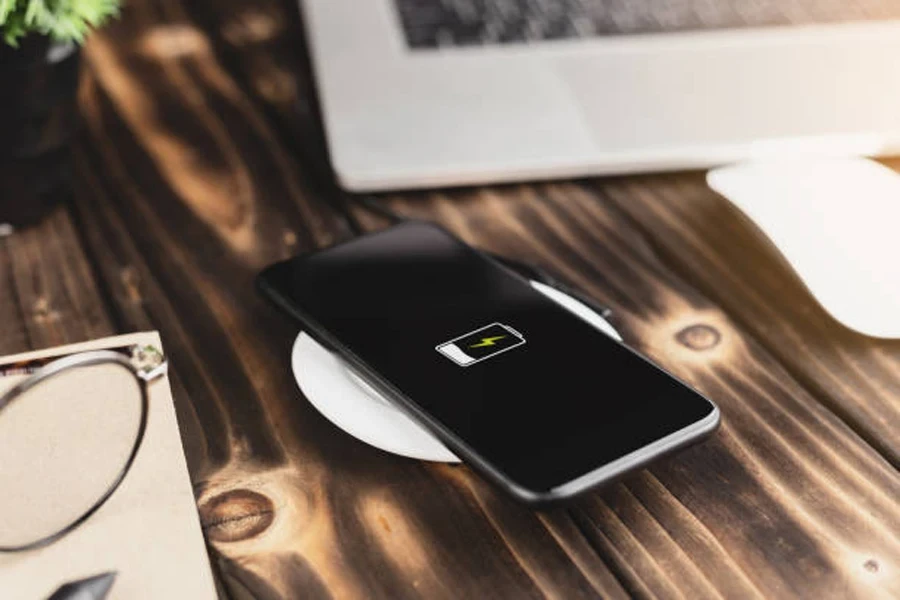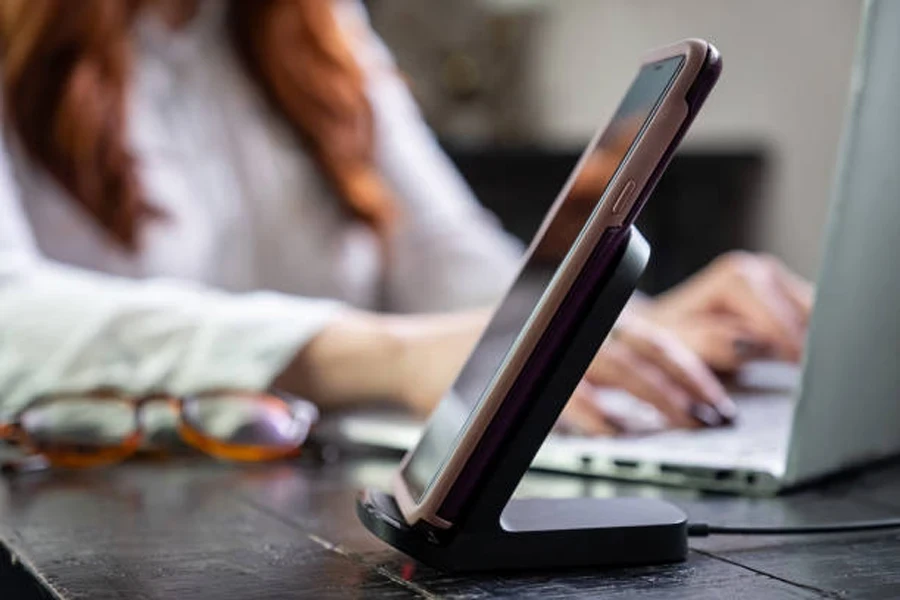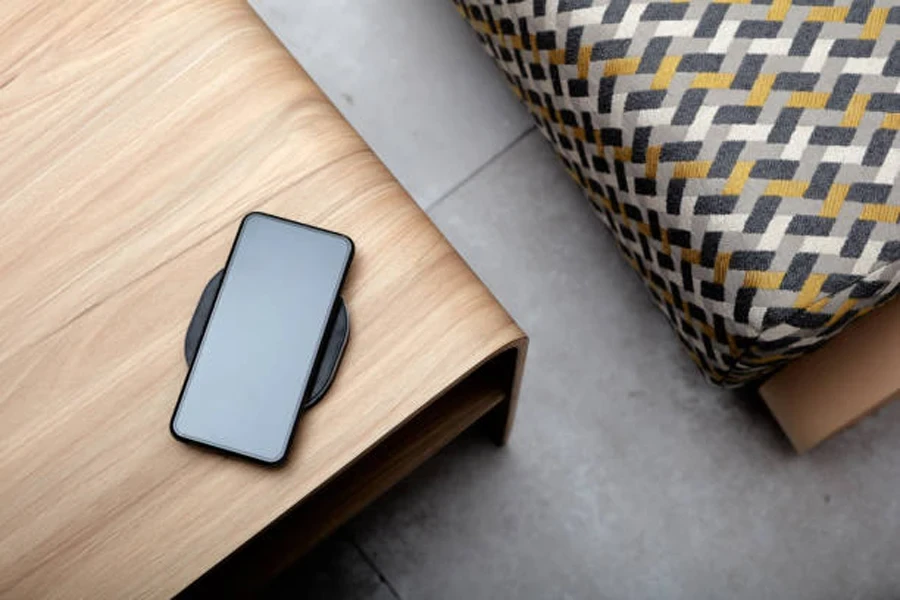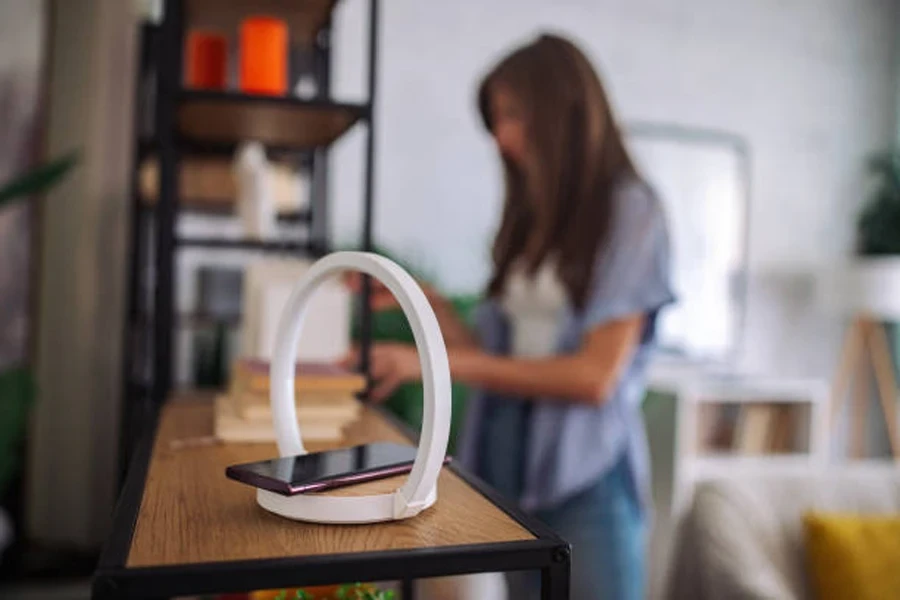Choosing the right wireless chargers for mobile phones is crucial for retailers in 2025, as these products offer unmatched convenience and efficiency for tech-savvy professionals. High-quality wireless chargers eliminate the hassle of cables, provide fast and reliable power, and are compatible with a range of devices. By offering advanced features such as multiple charging coils, LED indicators, and cooling systems, these chargers meet the evolving needs of users, enhancing their daily productivity and ensuring their devices are always ready for use.
Table of Contents
1. Understanding the Wireless Charger Market in 2025
2. Key Considerations for Selecting Wireless Chargers
3. Top Wireless Charger Models and Their Features
4. Conclusion

Understanding the Wireless Charger Market in 2024
The wireless charger market is witnessing substantial growth driven by the increasing demand for convenient and efficient charging solutions. In 2023, the global wireless charging market reached a value of approximately USD 13.96 billion and is projected to grow at a compound annual growth rate (CAGR) of 13.2% from 2024 to 2032, potentially reaching USD 42.50 billion by 2032. This growth is attributed to several factors, including the widespread adoption of consumer electronics, the integration of wireless charging in electric vehicles (EVs), and the rising use of wireless chargers in industrial applications.
In North America, the market is expected to dominate due to high adoption rates of EVs and consumer electronics. The U.S. market alone accounted for nearly 31% of the global revenue in 2023, driven by government initiatives promoting EV adoption and increasing demand for high-power output chargers. In the Asia Pacific region, robust manufacturing sectors and the proliferation of consumer electronics are fueling market expansion, particularly in countries like China and India, where industrial automation and the medical device industry are growing rapidly.

Key Considerations for Selecting Wireless Chargers
Charging Speed
Charging speed is a critical factor when selecting a wireless charger. The most common charging speeds are 5W, 10W, and 15W. Each speed level caters to different needs and device compatibility. A 5W charger is generally sufficient for overnight charging but can be slow for daily use. A 10W charger strikes a balance between speed and device safety, making it suitable for most users. The 15W chargers are the fastest and are ideal for those who need a quick power boost, particularly for newer smartphones like the iPhone 14 and Samsung Galaxy S22 (PocketTactics).
For optimal charging speeds, it is recommended to choose a 10W or 15W charger, especially for devices that support faster charging capabilities. These chargers ensure that your devices are charged efficiently without overheating (T3).
Compatibility
Ensuring compatibility with a wide range of devices is essential. Most wireless chargers use the Qi standard, which is supported by major smartphone manufacturers, including Apple, Samsung, Google, and others. This standardization ensures that a single charger can power multiple devices, from phones to earbuds and smartwatches (Anker).
It is crucial to check whether the wireless charger supports the specific devices your customers are likely to use. For example, Apple’s MagSafe chargers are optimized for iPhone 12 and newer models but are less effective for other brands (PocketTactics). Therefore, selecting a versatile charger that supports various brands and models will cater to a broader customer base.

Design and Build Quality
The design and build quality of a wireless charger significantly impact its durability and user experience. High-quality materials such as aluminum and premium plastics are preferred for their durability and heat dissipation properties. Non-slip surfaces ensure that devices stay securely in place during charging, preventing accidents and improving overall safety (T3).
Aesthetically pleasing designs also add value, especially for business environments where a professional look is important. Sleek and compact designs are ideal for travel and office use, offering both functionality and style (PocketTactics).
Additional Features
Modern wireless chargers come with a variety of additional features that enhance usability and safety. Multi-coil designs allow for more flexible device placement, reducing the need for precise alignment. LED indicators provide visual feedback on the charging status, making it easy to see when a device is fully charged (Engadget).
Cooling fans and overheating protection are also important features, as they prevent devices from overheating during fast charging. These safety features not only protect the devices but also extend the lifespan of the charger itself (T3).
Price and Warranty
The price range for wireless chargers varies widely, from budget-friendly options to high-end models. It is important to balance cost with quality and features. Budget models, like the Anker 313, offer essential features at a lower price point but may lack advanced capabilities (TechGearLab).
Mid to high-end chargers often come with additional features and better build quality, justifying the higher price. Offering a solid warranty and reliable after-sales support is also crucial, as it provides customers with confidence in their purchase and ensures long-term satisfaction (Engadget).
Top Wireless Charger Models and Their Features

Best Overall: Anker 3-in-1 Cube with MagSafe
The Anker 3-in-1 Cube with MagSafe stands out for its versatility and powerful performance. It offers 15W ultra-fast charging specifically designed for iPhone 15/14/13/12 series through Apple MagSafe, ensuring a quick and efficient charge. The foldable and compact design makes it ideal for on-the-go use, while its ability to charge an iPhone, Apple Watch, and AirPods simultaneously offers unparalleled convenience. The ability to switch between landscape and portrait mode provides flexibility for users, enhancing their overall experience.
Best Budget: Anker 315 Wireless Charger
The Anker 315 Wireless Charger is a budget-friendly option that does not compromise on essential features. It offers a maximum output of 10W (7.5W for iPhones), providing a reliable and efficient charging experience. Its compact and lightweight design makes it perfect for travelers, while the inclusion of safety features like temperature control and surge protection ensures device safety. Despite its low price, it delivers consistent performance, making it an excellent choice for cost-conscious buyers.

Best Premium: Belkin BoostCharge Pro Portable Wireless Charger Pad
The Belkin BoostCharge Pro Portable Wireless Charger Pad is a high-end model that offers superior performance and additional features. With a maximum output of 15W, it provides fast and efficient charging for various devices. The compact design includes a kickstand for easy viewing during charging and a long 6.6ft braided cable for flexibility. This charger is designed specifically for Apple devices, making it an excellent choice for users within the Apple ecosystem. Its high build quality and additional features justify the premium price tag.
Best for Travel: Mophie Powerstation Wireless XL
The Mophie Powerstation Wireless XL is ideal for business professionals who need a reliable charging solution on the go. This portable battery pack offers 10,000mAh of battery storage, allowing users to charge their devices wirelessly or via USB. Its compact size and ability to charge multiple devices make it perfect for travel. The LED status light provides clear indications of charging status, ensuring users are always aware of their device’s power levels. Its robust and portable design ensures that it can handle the rigors of travel without compromising on performance.
Conclusion
Selecting the right wireless charger involves carefully considering various factors, including charging speed, compatibility, design, additional features, and price. By understanding these elements and staying informed about the latest trends and advancements, business professionals and online retailers can make informed decisions that cater to their customers’ needs. Offering a range of wireless chargers that balance quality, performance, and affordability will ensure customer satisfaction and enhance overall business success in the competitive market of 2025.




